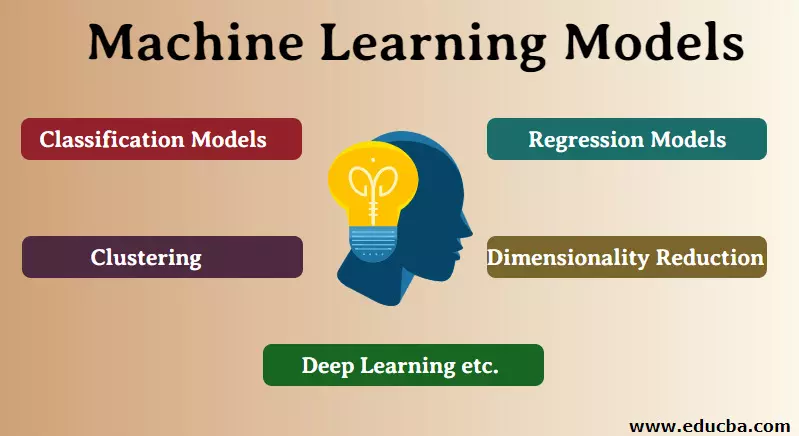Commonly used Machine Learning Models

There is no one-size-fits-all approach when it comes to Machine Learning Algorithms. Therefore, it is imperative to try numerous algorithms for your problems and determine which fits best.
While we continue to live in dynamic times, numerous types of machine learning algorithms have been designed. This will efficiently help in solving all the complex real-world problems. Enrolling in a machine learning using python will help you understand the functionality of the algorithms better and also their implications. Such courses also help you secure a better job in this field.
This article will discuss the top ML algorithms that you need to know in 2023. These ML algorithms will definitely help you upskill and learn more about machine learning in detail.
Come, let’s dive in!
Defining ML Algorithms?
Machine Learning algorithms are nothing other than a typical program code that enables professionals to understand large complex datasets. Furthermore, it also helps in studying, analyzing, comprehending, and exploring the same.
Each of the algorithms follows a series of instructions for accomplishing the objective of making predictions. Besides, they also categorize information by learning, establishing, and discovering numerous patterns embedded within the data.
Which ML Algorithms should you know?
It is no secret that Machine Learning has significantly impacted our regular lives. In fact, Machine Learning is omnipresent, from scheduling appointments to notifying users about calendar events. All the intelligent systems you unknowingly interact with in your daily life typically operate on machine learning algorithms.
Here, we have made a comprehensive listing of the top machine-learning algorithms which will help you acquire actual results:
● Logistic Regression
In logistic regression, the dependent variable is of binary type. This type of regression analysis describes data and goes on to explain the relationship between one dichotomous variable and one independent variable.
It is basically used for predictive analysis where the pertinent data predicts an event probability to a logit function. Therefore, it is also popularly known as logit regression.
● Linear Regression
Linear Regression offers a relationship between the input and an output variable. It is also referred to as independent and dependent variables.
In Linear Regression, the relationship between independent and dependent are established by fitting them to a regression line. The mathematical representation of this line is y=mx + c. Here, y is the dependent variable, x is the independent variable, m is the slope, and c is the intercept.
The main objective of linear regression is to find the best-fit line which reveals the relationship between y and x variables.
● SVMs or Support Vector Machines
The Support Vector Machine algorithms are used for accomplishing both regression and classification tasks. They plot each piece of data within the n-dimensional space. And each feature value is typically associated with a coordinated value, making it quite easier to plot the features.
● Decision Trees
With a decision tree at your disposal, you can efficiently visualize the map of potential results for certain decisions. It helps companies to make a comparative study on the possible outcomes and move on to make an appropriate decision. However, the decision is entirely based on advantages and probabilities which benefit the companies.
The decision tree algorithm is capable of anticipating the best option. Besides, they also come in handy when it comes to brainstorming over a specific decision.
● KNN Classification Algorithm
The KNN Classification Algorithm is deliberately used for both regression and classification problems. In fact, it efficiently stores all the known use cases. Furthermore, it goes on to classify the new use cases by segregating them into different classes. This classification is entirely based on the similarity scores of the recent use cases.
● Naive Bayes Algorithm
This algorithm typically refers to a probabilistic machine learning algorithm. It is entirely based on the Bayesian probability model, which is used for addressing classification problems.
The approach of Naive Bayesian is quite easy to develop and implement. Besides, it can also handle enormous datasets for making real-time predictions. Some of its applications are sentiment analysis and prediction, spam filtering, document classification, etc.
● K-Means
It is a distance-based unsupervised machine learning algorithm that effectively accomplishes all the clustering tasks. This algorithm enables you to classify datasets into clusters where the data points remain homogenous. However, the data points from two distinctive clusters are heterogeneous.
● Random Forests
Random forests are a flexible ensemble learning technique for regression and classification tasks across several domains. During the training phase, the algorithm generates many decision trees. From these individual trees, it produces the mean prediction for regression tasks or the mode of the classes for classification tasks. Its numerous uses include stock price prediction, recommendation systems, and picture categorization.
The algorithm's strength is its capacity to build several decision trees utilizing random subsets of the training data and features, which helps to reduce overfitting and improve accuracy. Irregular woodlands are promptly executed by notable libraries like Scikit-learn, XGBoost, and LightGBM, which makes them broadly usable by experts, particularly in Python-based settings.
● Gradient Boosting Machines (GBM)
A potent ensemble learning method used in many different sectors for tasks including click-through rate prediction, anomaly detection, and online search ranking is gradient boosting machines. Gradient boosting machines, in contrast to random forests, build models in a sequential fashion, with each new model seeking to correct the mistakes committed by its predecessors.
By concentrating on cases that were difficult to forecast in earlier iterations, this iterative strategy enables the algorithm to increase its prediction accuracy progressively. One tree at a time, the algorithm refines the ensemble's predictions with each new tree. Gradient boosting machines are implemented in widely used libraries like XGBoost, LightGBM, and CatBoost, which makes them easily available to practitioners, especially in Python-based contexts.
● Neural networks
Neural networks represent a class of deep learning models characterized by their multi-layered architecture, comprising interconnected nodes, or neurons, that enable them to learn intricate patterns and representations from complex datasets. Widely applied across domains, neural networks find utility in tasks such as image recognition, speech recognition, and natural language processing, among others.
The algorithm underlying neural networks hinges on the iterative adjustment of connection weights between neurons, a process known as backpropagation, which aims to minimize the disparity between predicted and actual outputs. With popular libraries like TensorFlow, PyTorch, and Keras offering implementations, neural networks are accessible to practitioners, particularly within the Python ecosystem, facilitating experimentation and deployment in various applications. For those interested in deepening their knowledge, AI and Machine Learning Courses can provide valuable insights into these tools and their practical application
● Principal Component Analysis (PCA)
PCA serves as a pivotal technique for dimensionality reduction, facilitating the transformation of high-dimensional datasets into lower-dimensional spaces while conserving the majority of the original variance. Its applications span across various domains, including the visualization of high-dimensional data, noise reduction, and feature extraction.
PCA achieves this by pinpointing the principal components, which are the directions in the data that exhibit the highest variance, and subsequently projecting the data onto these components. Widely available in libraries such as Scikit-learn for Python, MATLAB, and R, PCA offers practitioners a versatile toolset for effectively managing and analyzing complex datasets across different platforms.
To conclude
By now, you will probably know that machine learning algorithms tend to learn from typical observations. They analyze data, detect patterns, and map input to output. While the algorithms process a greater amount of data, they become smarter and improve the overall predictive performance.
With every passing day, new variants of the existing machine learning algorithms are emerging. This is mainly because of the altering requirements and the complexity of the problems. You can consider choosing a machine learning algorithm that best suits your requirements.
So, what are you waiting for? Get a head start on machine learning and prepare yourself to upskill and land your dream job.



















